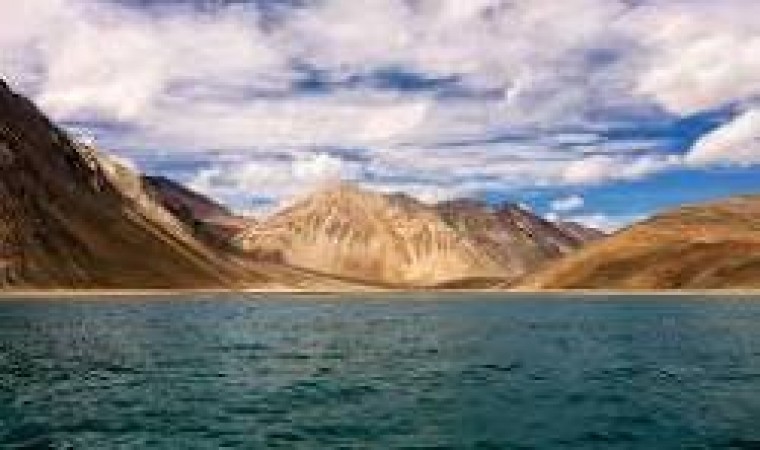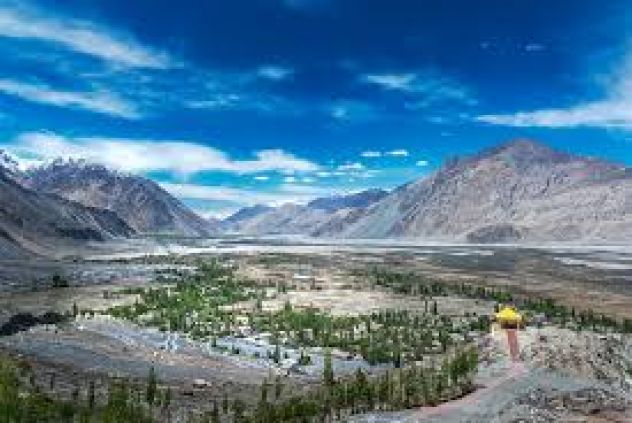
Ladakh, often referred to as the Land of High Passes, is a region in the northernmost part of India, nestled between the Great Himalayas and the Karakoram Range. It's renowned for its stunning landscapes, Buddhist monasteries, and unique cultural heritage. A comprehensive tour guide to Ladakh in can cover its attractions, travel tips, and cultural insights to help you make the most of your journey.

Geography and Climate:
Ladakh is characterized by high-altitude deserts, majestic mountains, and deep valleys. It experiences extreme weather conditions, with bitterly cold winters and short, pleasant summers. The best time to visit is from May to September when roads are open, and the weather is relatively mild.
Main Attractions:
1. Leh:
- Start your journey in Leh, the capital of Ladakh, situated at an altitude of 3,500 meters above sea level.
- Explore Leh Palace, a former royal palace offering panoramic views of the city.
- Visit Shanti Stupa, a white-domed Buddhist stupa offering serene views of the surrounding landscape.
- Discover the bustling markets offering Tibetan artifacts, handicrafts, and souvenirs.
2. Monasteries:
- Ladakh is home to several ancient Buddhist monasteries, including Thiksey, Hemis, Diskit, and Lamayuru.
- Experience the spiritual ambiance, admire the intricate murals, and witness monks engaged in prayer rituals.
- Attend festivals like Hemis Festival to witness traditional dance, music, and masked performances.
3. Pangong Lake:
- Journey to Pangong Lake, a breathtaking high-altitude lake situated at an elevation of 4,350 meters.
- Marvel at the changing hues of blue reflecting the sky, surrounded by rugged mountains.
- Enjoy camping by the lakeside and witness stunning sunrises and sunsets.
4. Nubra Valley:
- Explore the enchanting Nubra Valley, known for its stark landscapes, sand dunes, and Bactrian camels.
- Cross the world's highest motorable pass, Khardung La, to reach Nubra Valley.
- Visit Diskit Monastery, nestled on a hilltop overlooking the valley.
5. Magnetic Hill and Confluence:
- Experience the intriguing phenomenon of Magnetic Hill, where vehicles appear to defy gravity and roll uphill.
- Witness the confluence of the Indus and Zanskar Rivers, a surreal sight where two distinct shades of water merge.
6. Tso Moriri Lake:
- Venture to Tso Moriri Lake, a lesser-known gem with pristine blue waters surrounded by barren hills.
- Encounter nomadic settlements and diverse bird species in the surrounding wetlands.
7. Trekking:
- Ladakh offers numerous trekking routes catering to various difficulty levels and durations.
- Popular treks include the Markha Valley Trek, Stok Kangri Trek, and the Chadar Trek (winter trekking on frozen river).

Cultural Insights:
1. Tibetan Influence:
- Ladakh's culture is heavily influenced by Tibetan Buddhism, evident in its monasteries, prayer flags, and rituals.
- Engage with local communities to learn about their customs, traditions, and way of life.
2. Festivals:
- Attend vibrant festivals like Losar (Tibetan New Year), Hemis Festival, and Ladakh Festival to experience the region's rich cultural heritage.
- Witness colorful masked dances, traditional music, and rituals during these celebrations.
3. Homestays:
- Opt for homestay accommodations in remote villages to immerse yourself in Ladakhi hospitality and lifestyle.
- Participate in cooking sessions, agricultural activities, and cultural performances organized by your hosts.
Travel Tips:
1. Acclimatization:
- Ladakh's high altitude requires acclimatization to avoid altitude sickness. Spend a few days in Leh before venturing to higher altitudes.
2. Health Precautions:
- Stay hydrated, avoid strenuous activities, and carry necessary medications for altitude sickness.
- Pack warm clothing, sunscreen, and sunglasses to protect against the harsh mountain sun.
3. Permits:
- Obtain necessary permits for restricted areas like Pangong Lake, Nubra Valley, and Tso Moriri Lake from the Leh District Magistrate Office or online portals.
4. Responsible Tourism:
- Respect local customs, traditions, and wildlife. Avoid littering and contribute to the preservation of Ladakh's pristine environment.
5. Transportation:
- Rent a sturdy vehicle or hire a local taxi for exploring Ladakh's rugged terrain.
- Be prepared for long drives and challenging road conditions, especially on mountain passes.
6. Connectivity:
- Limited mobile network and internet connectivity are prevalent in remote areas of Ladakh. Carry offline maps and essential contact numbers.
Ladakh offers a mesmerizing blend of natural beauty, cultural richness, and adventure. Whether you're trekking through high mountain passes, meditating in ancient monasteries, or interacting with hospitable locals, Ladakh promises an unforgettable journey into the heart of the Himalayas. Embrace the serenity of this remote region, and let its rugged landscapes and spiritual aura leave an indelible mark on your soul.
Tourism Booms in Lakshadweep Following Prime Minister Modi's Visit: Reports
Keep these things in mind before traveling, the fun of the trip will not be spoiled